About us
Basic information of EZÚS Via Carpatia
The European Grouping of Territorial Cooperation Via Carpatia with limited liability was founded in 2013. The grouping consists of two members - the Košice Self-governing Region and the county of Borsod-Abaúj-Zemplén. The group operates on a territory with an area of just over 14 thousand km², where over 1.4 million inhabitants live. The chairman of the general assembly of the EGTC Via Carpatia is Dr. Bánné. Gál Boglárka from Borsod-Abaúj-Zemplén county and the vice-chairman of the general assembly is Ing. Rastislav Trnka from the Košice Self-governing Region.
The mission of the EGTC Via Carpatia is to connect the regions of Košice and Boršod County and to develop them through projects in various areas, such as ecology, education, silver economy, local economy, increasing the educational level and employment, and many other topics that will improve the lives of people in the regions on both sides of the border.
Members of EZÚS Via Carpatia
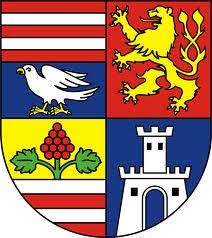
Capital city: Košice
Area: 6 753 km²
Population (2021): 780 288
Number of districts: 11
Number of municipalities: 440, of which 17 towns
The coat of arms of the Košice Self-governing Region
More info at: web.vucke.sk
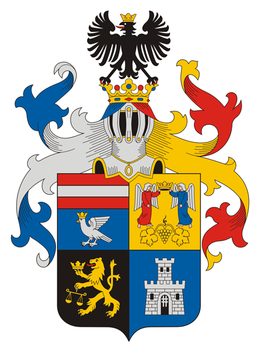
Capital city: Miskolc
Area: 7 247,17 km²
Population (2022): 626 477
Number of districts: 16
Number of municipalities: 358, of which 27 towns
The coat of arms of Borsod-Abaúj-Zemplén
More info at: baz.hu
In May 2012, the first replacement of the founding documents took place between the Slovak and Hungarian parties. Less than a year later, on January 9, 2013, the documents were ratified - the Agreement on the establishment of the EGTC Via Carpatia s.r.o. and the Statutes of the EGTC Via Carpatia s.r.o. On May 31, 2013, the group was registered at the Office of the Government of the Slovak Republic. On September 1, 2013, the EGTC Via Carpatia s.r.o. began operating.
Chairmen of EZÚS Via Carpatia since 2013
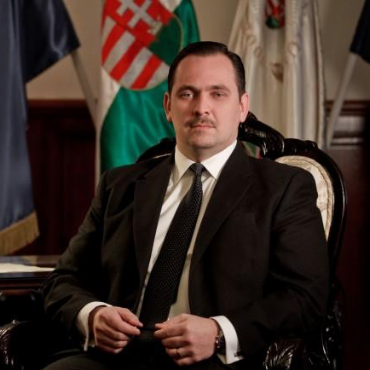
Mengyi Roland
2013 - 2015
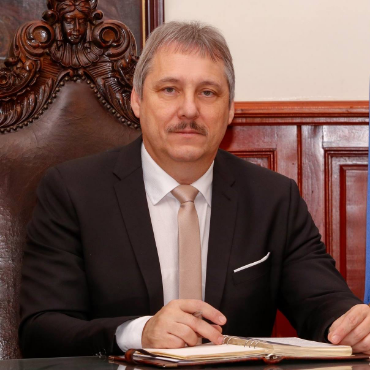
Török Dezső
2015 - 2019

Bánné dr. Gál Boglárka
2019 - up to now
Vice-presidents of EZÚS Via Carpatia since 2013
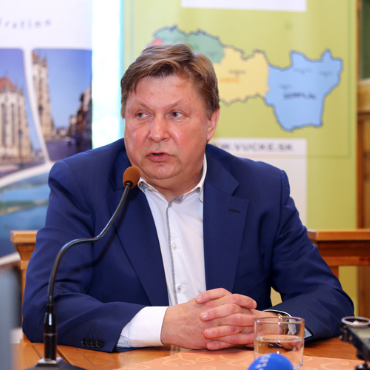
Zdenko Trebuľa
2013 - 2017

Rastislav Trnka
2017 - up to now
The Organs of EGTC Via Carpatia
Supervisory Board
General Assembly
Objectives of EZÚS Via Carpatia
The goals of Via Carpatia are based on the Articles of Association and the Group Agreement and are mainly:
- Elaboration of the common development strategies
- Elaboration and implementation of joint projects for the realization of common development strategies
- Initiatives leading to the management of the cross-border cooperation programs funded by the EU funds for the implementation of the joint projects and joint development strategies.
- Integration in field such as health care, personal and road transport, municipal waste, anti-flood activities, environmental protection, cycling routes, the Tokaj wine region, energy supply, creation of cross-border logistics and industrial zones, risk management, investment support.
In addition to the main goals, the group focuses – albeit marginally – on joint procedures in the field of redirecting international goods flows, in initiatives leading to the revival of intermodal transport and also in initiatives leading to the construction of the Via Carpatia transit road.
Via Carpatia transit route
Via Carpatia is the shortest historical road from north to south, connecting the Baltic Sea with the Aegean Sea.
The development of the Via Carpatia Transit Road, as well as its faster completion, would greatly affect the economic growth of countries, including the development of small and medium-sized businesses, science and research, technology and industrial parks.
The road known as Via Carpatia runs from the Lithuanian port city of Klaipeda through Kaunas, the Polish cities of Bialystok, Lublin and Rzeszów, through Košice and the Hungarian cities of Miškovec and Debrecen, across Romania through Oradea (Great Varadín), Lugoj, Calafat and Constanta, through the Bulgarian metropolis Sofia and the city of Svilengrad and should end in Thessaloniki, Greece. The original Lancut declaration was signed in 2006 by the transport ministers of four countries – Lithuania, Poland, Hungary and Slovakia who declared the cooperation of these four countries in the construction of the Via Carpatia road.
From 2006 to the present, there have been many activities in this direction:
In June 2006, the idea of the Via Carpatia – Poland transit route was born. In October 2006, a conference called “One road – four countries” was held. The ministers of Poland, Lithuania, Hungary and Slovakia discussed the north-south road stretch – Via Carpatia. The result of the conference was the signing of the Lankut Declaration, which called on national governments to include this route among the priorities of the national transport policy. (Lancút, Subcarpathian Voivodeship). A year later, in October 2010, an international conference was held where the transport ministers of 7 countries signed a joint declaration – The “Via Carpatia” Declaration (Lancút, Subcarpathian Voivodeship). In November 2012, a call was accepted under the title “Road route Via Carpatia – An opportunity to strengthen the competitiveness of the eastern regions of the EU” aimed at supporting the construction of Via Carpatia and its inclusion in the TEN-T.
The greatest achievements of EGTC Via Carpatia in the construction of the Via Carpatia corridor (the shortest road from the north of Europe to the south) were achieved in cooperation agreements signed in 2015 and 2016.
The cooperation agreement was signed on April 17, 2015 in Rzeszów, Poland by representatives of the regional governments of Poland, Slovakia and Hungary. The representatives of four municipalities – Podkarpatské voivodship, Košice Self-governing Region, Prešov region and Boršod Abov Zemplín county have agreed on the rules of mutual cooperation in the implementation of activities aimed at building the Via Carpatia transport corridor.
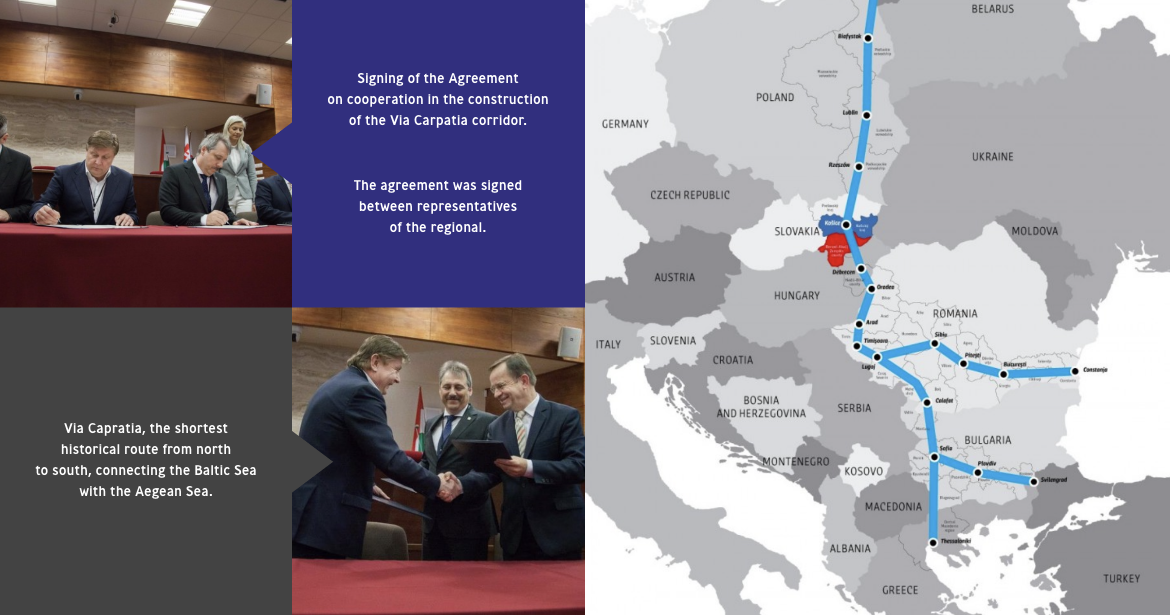
In November 2016, a conference was held under the name “10th anniversary of the declaration of Lancut – Via Carpatia today, challenges for the future”, which followed the meeting from 2015. Within the framework of the conference, the agreement was expanded to include three more regions: Lubelskie Voivodeship, Masovian Voivodeship and Podleskie Voivodeship.
In addition to these international events, EGTC Via Carpatia held numerous negotiations, workshops, meetings on the Via Carpatia route. It was discussed at the national, regional and local level, and currently this topic has moved into the implementation phase, when countries have started the construction of individual routes and a phased handover is expected by 2025 – 2030.